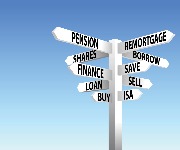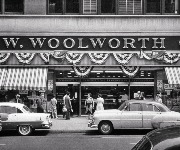Savers: Earn 11% on your money!

By looking beyond the banks, you can earn a mighty rate of interest on your cash!
The paltry savings rates on offer have led to savers looking for alternative ways to get a decent return on their cash.
One potential option, offering far better rates of interest than you’ll get at your local bank, is from social or peer lending.
So how does social lending work?
What is social lending?
Ordinarily, if you want to borrow money you turn to the banks. And the money that the banks and building societies use to fund those loans comes from savers. But while savers get a naff return on their cash, the banks and building societies pocket a healthy chunk of profit just for acting as a middle man.
Social lending essentially cuts out that middle man. If you have savings that you fancy earning a decent rate of interest on, you can lend them directly to borrowers via the numerous social lending sites out there. And as your money is spread between different borrowers, the risk that you take on is significantly reduced.
Social lending is also good for borrowers as they may be able to get a better rate than through traditional routes. They also know that they are dealing with real people, and not some faceless bank!
Let’s take a look at some of the biggest names in social lending, and how you can get a seriously good return on your cash.
Zopa
When you think about social or peer lending, the first name that comes to most our minds is Zopa. Zopa has been around since 2005, and has built up a very solid name and reputation.
Zopa looks at the credit scores of prospective borrowers, and gives them a rating based on their level of risk. The ratings are A*, A, B, C or Young. Lenders can then decide where that money is lent. So if you want to go the low risk route, you can keep it all with A* rated borrowers. Or if you want to get a better return – and lending to borrowers with slightly worse ratings does mean you can charge higher rates of interest – you can go for a mix.
Loans are either over 36 or 60 months, with an average rate of 6.8%. However, over the past year (after the fee, and before bad debt is taken into account), you could have earned as much as 11% (lending to C borrowers over 60 months). It’s completely up to you the rate you charge on your cash.
You will have to pay an annual fee of 1% on the money you lend.
How safe is your money?
The money you lend is spread between a number of borrowers so that, even if a borrower or two struggles with their repayments, you’ll still be looking at a decent return rather than losing all of your cash.
What’s more, Zopa employs a collections agency to chase any borrowers missing payments for that cash.
RateSetter
An alternative social lending firm to consider is RateSetter. With RateSetter you can choose from two different models, either lending on a rolling monthly basis or over three years.
With the monthly model you get the best market rate that month, so you’re looking at a variable return. You can also withdraw your cash at one month’s notice. The current rate lenders can expect with this model is 4% if they want to be matched with a borrower immediately, or you could set a higher rate and wait to be matched.
Alternatively you can lend over 36 months, and you can choose what you want to do with the instalments, whether to re-lend (in either the 36-month or rolling market), or just take the cash as an income. Currently the rate at which lenders can be immediately matched is 6.6%.
How safe is your money?
One thing that’s a little bit different about RateSetter is its Provision Fund. This is a pot of cash set aside to cover RateSetter lenders should any borrowers fall behind on their repayments. The fund is currently worth £279,873, so there’s a decent sized chunk of money, just in case.
RateSetter will work out who your money is lent to, though the firm emphasises that its borrowers are ‘prime’, and must not have any CCJs or a history of bad debt.
Funding Circle
The third firm I’m going to look at today is Funding Circle. The proposition is a little different – rather than lend to individuals, your cash goes to small businesses.
Funding Circle reckons you can earn an average yield of 8.4% (before fees and bad debt is accounted for). What’s more, your money is never out of reach – you can access it when you need to, by selling your parts of loans to other lenders (though you will pay a 0.25% fee).
One nice feature is that you get to choose exactly which businesses you want to lend to, so it’s a bit like being on Dragon’s Den!
How safe is your money?
Lending to businesses is somewhat different to lending to individuals. Funding Circle has a team of underwriters who review each loan application and only allow businesses established for more than two years, and with a good credit score and financial position to be presented to the lenders.
What’s more, not only does the firm have a collection agency in place to chase missed payments, but it is explicit about the arrangements in place should Funding Circle ever go out of business.
The safety of banks
A final word of warning: social lending sites aren't protected by the FSCS compensation scheme, the way most UK banks are. So social lending is probably not the best option for your emergency savings pot.
A blossoming market
These three firms are not the only ones which offer a peer lending service. If you have experience with one of their rivals, or even one of the firms I’ve looked at, why not share them with your fellow lovemoney.com readers below?
More: Don't get naked, just destroy your credit card debt | How to get rich running a B&B
Most Recent
Comments
Be the first to comment
Do you want to comment on this article? You need to be signed in for this feature








